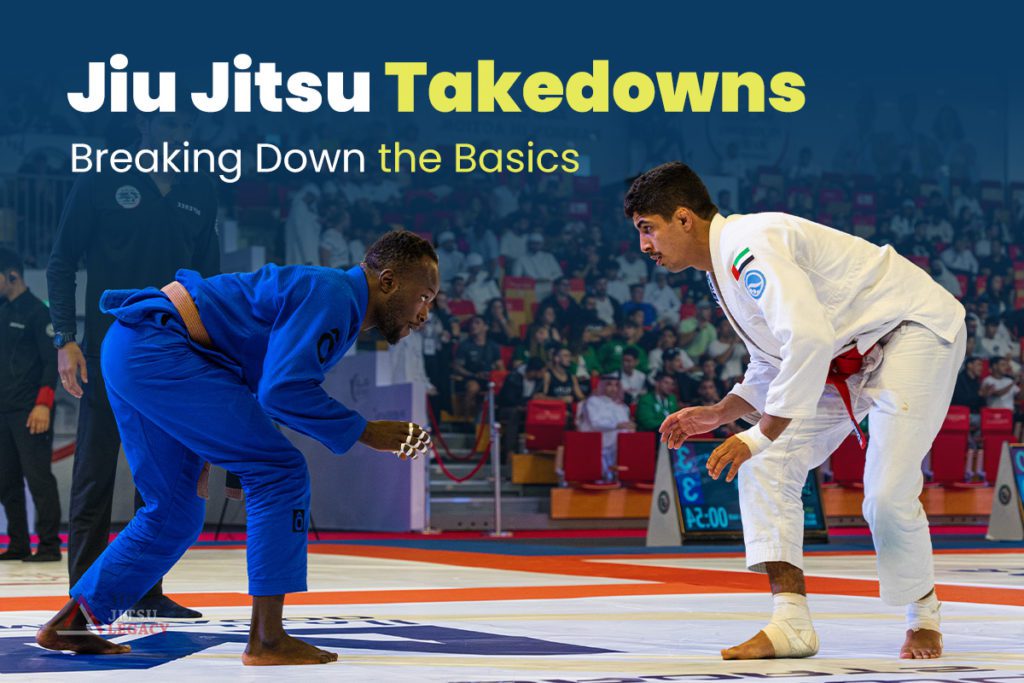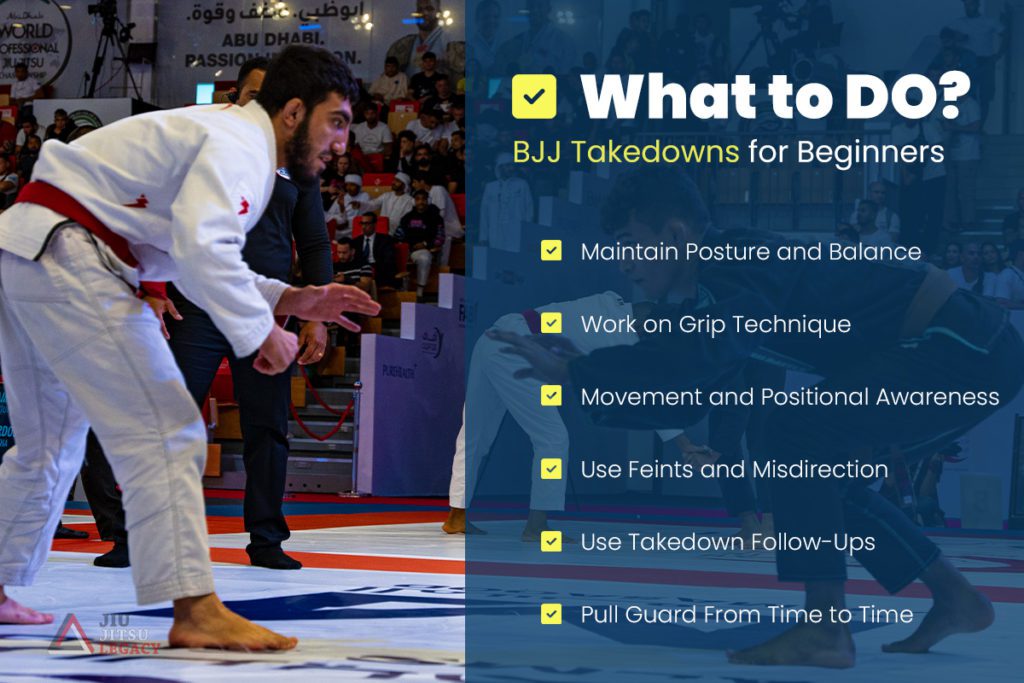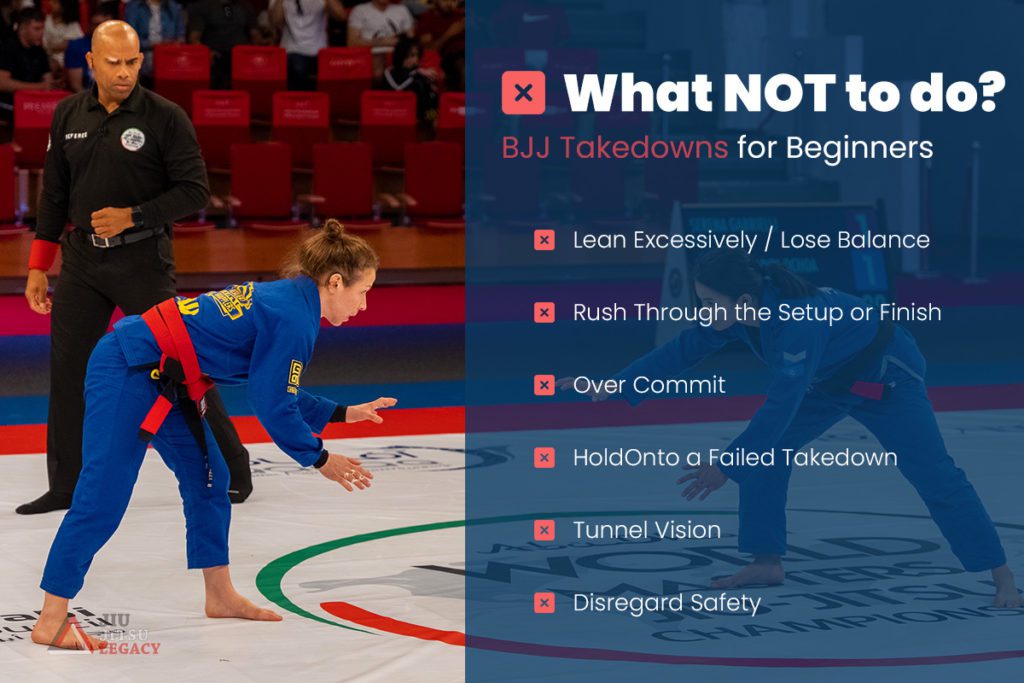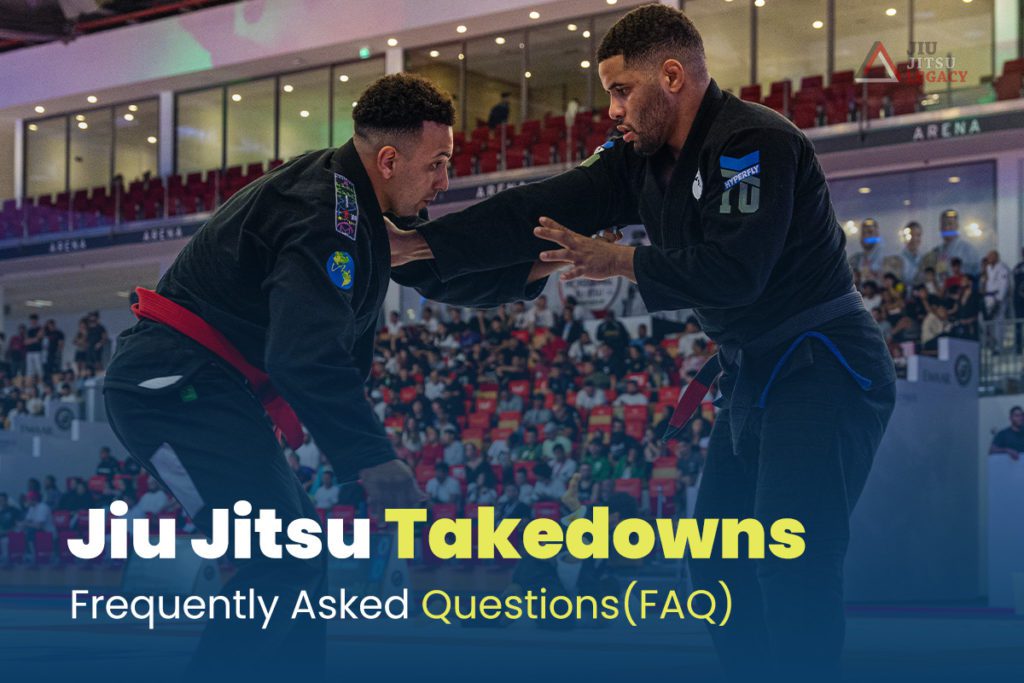BJJ takedowns are a crucial aspect of Brazilian Jiu Jitsu, and mastering them can be challenging, especially for beginners. Proper technique, balance, and strategy are key to executing successful takedowns and avoiding injuries. This article will provide 12 dos and don’ts of BJJ takedowns for beginners to help you improve your technique and safety in training and competition.
The Basics of BJJ Takedowns

While BJJ is often considered a ground fighting art (which, most of the time, it is), having solid takedown skills can give you a significant advantage over your opponents. BJJ takedowns are instrumental in getting the match or fight to the ground, and they share several key characteristics.
Essentially, BJJ takedowns involve taking your opponent down to the ground while maintaining control over them. This can be accomplished through various techniques, including throws, trips, and sweeps.
Unlike in some other martial arts, takedowns in BJJ are not designed to inflict damage on your opponent – instead, they’re used to gain a dominant position on the ground where you can control the flow of the fight.
You’ll need to understand several fundamental elements to execute successful BJJ takedowns. These include grip, stance, footwork, balance, and leverage.
Having a purposeful and strong grip on your opponent is critical for setting up and executing takedowns. It lets you control their movements and prevent them from escaping or countering your efforts.
Your stance and footwork are also important, as they help you create openings for takedowns and maintain balance during the execution.
Additionally, having a good sense of balance and leverage will allow you to control your opponent’s movements and position yourself for successful takedowns. With takedowns, constantly being balanced while disrupting the other person’s balance is instrumental for success.
Dos of BJJ Takedowns for Beginners

When it comes to executing takedowns in BJJ, beginners should keep in mind several important dos to ensure effectiveness and safety.
Maintaining proper posture and balance, using proper grip technique, being aware of your surroundings and your opponent’s movements, setting up takedowns with feints and misdirection, continuing to move and transition after the takedown, and not being afraid to pull guard are important dos for BJJ takedowns for beginners.
By following these guidelines, beginners can safely and effectively execute takedowns and gain greater control over their opponents.
1. Maintaining Posture and Balance
One key aspect is maintaining proper posture and balance. This involves keeping your back straight and hips low while maintaining a stable base. Proper posture and balance will help you generate more power and control over your opponent, reducing the risk of injury or losing control. Looking at the ceiling is an easy hint to help you immediately improve posture.
2. Grip Technique
Another important do of BJJ takedowns is using proper grip technique. Your grips should be strong and secure, whether you are using a collar grip, sleeve grip, or any other type of grip. This will allow you to control your opponent’s movements and set up your takedown with greater ease.
3. Movement and Positional Awareness
Moving witih purpose (like the example of stepping in different directions during the bodylock and front headlock BJ takedowns) is essential to making takedowns work because they disrupt the balance of the opponent.
Additionally, beginners should be aware of their surroundings and their opponent’s movements at all times. This means being ready to react quickly to any changes in position and anticipating your opponent’s next move.
4. Using Feints and Misdirection
Setting up takedowns with feints and misdirection is also a key dos of BJJ takedowns for beginners. By faking a takedown attempt or shifting your weight in a certain direction, you can create openings for your takedown and throw your opponent off balance.
5. Takedown Follow-Ups
A key component of a successful takedown is the ability to keep the person you took to the ground there. After successfully executing a takedown, it is important to continue moving and transitioning to maintain control and prevent your opponent from countering.
You won’t get any points in competition if you do not prevent the opponent from immediately standing back up.
6. Pull Guard From Time to Time
Lastly, even if you have a fully prepared and drilled in takedown game, things don’t always go to plan in competition, and certainly during rolling with higher belts. If you see your takedown entries and grip fighting fail, do not be afraid to resort to pulling guard.
Although not usually mentioned as part of the BJJ takedowns category, guard pulling does just that – takes the opponent to the ground.
Don’ts of BJJ Takedowns for Beginners

As a beginner, it’s important to avoid certain pitfalls when it comes to executing takedowns in BJJ. Things that can derail your progress and make your takedowns potentially dangerous include (but are not limited to) leaning excessively in any direction, rushing thorough the steps, ovecomitting on a takedown even if the mechanics are failing, holding on to an already failed attempt, getting tunnel vision and not seeing other things outside BJJ takedowns and being lackluster about safety.
7. Leaning Excessively
One of the most common mistakes is leaning forward or compromising your balance, which can make you vulnerable to counterattacks from your opponent. Instead, focus on maintaining good posture and balance throughout the takedown process. This will help you stay in control and avoid getting swept or taken down yourself.
8. Rushing Through the Setup or Finish
Another don’t for BJJ takedowns is rushing through the setup or execution of a takedown. Taking your time and being patient can help you set up the takedown properly, be purposeful with grips, control your opponent, and increase your chances of success.
9. Over committing
Over committing to any one takedown without proper setup or control is also a common mistake. This can leave you off-balance and open to counterattacks. Instead, work on setting up your takedowns with feints and misdirection, and focus on maintaining control throughout the process.
10. Holding Onto a Failed Takedown Attempt
It’s also important to remember not to hold onto a failed takedown attempt and leave yourself vulnerable. If your initial attempt is unsuccessful, be prepared to transition to another technique or position promptly.
11. Tunnel Vision
Furthermore, it’s important not to focus solely on takedowns at the expense of other aspects of your game. BJJ is a multifaceted sport, and having a well-rounded game will serve you better in the long run. An example is connecting BJJ takedowns with pulling guard.
12. Disregarding Safety
There is not much mystery about this one. Takedowns are statistically the most dangerous part of grappling training, and the awareness for safety has to be a priority. In other words, it is better to let go and fail at a takedown attempt, than to cause long-term injury to a training partner.
Always prioritize safety and avoid reckless behavior that could lead to injury for yourself or your training partners.
Bonus Tips and FAQs
In the following section, we’ll cover a few tips on approaching takedown training, as well as cover some of the most frequently asked questions beginners have about takedown techniques in Jiu Jitsu.
BJJ Takedown Tips
Focusing too Much on Power (And not Enough on Technique)
One of the biggest mistakes that beginners make when it comes to BJJ takedowns is focusing too much on power and not enough on technique. While it’s important to have strength and power, proper technique is key to executing takedowns effectively and safely. Instead of relying solely on brute force, focus on improving your technique by drilling the takedowns and seeking guidance from experienced instructors.
Not Practicing Takedowns Enough in Training
Another common mistake that beginners (and even more advanced grapplers) make is neglecting takedown practice in their training. While it’s easy to get caught up in other aspects of BJJ, takedowns are an essential part of the sport and should not be overlooked. Make sure to set aside time for takedown drills and sparring sessions to improve your technique and confidence in executing takedowns.
Getting Discouraged by Failed Attempts
It’s important to remember that learning BJJ takedowns is a process that requires patience and persistence. Many beginners get discouraged by failed attempts and give up too soon, but it’s important to keep trying and learn from your mistakes. Don’t be afraid to ask for feedback and guidance from your training partners and instructors, and use each failed attempt as an opportunity to learn and improve.
With practice and dedication, you’ll soon become more confident and effective in executing BJJ takedowns.
FAQs

What are the highest percentage takedowns in BJJ?
The highest percentage takedowns in BJJ are the double leg takedown, single leg takedown, and the ankle pick. These takedowns have been proven to be effective in competitions and are commonly used by BJJ practitioners at all levels.
How important are takedowns for BJJ?
Takedowns are an important aspect of BJJ because they allow practitioners to take control of the match early and set the pace. A successful takedown can lead to advantageous positions on the ground, making it easier to apply submissions and control the opponent. Additionally, takedowns earn points (2) in BJJ competitions, making them an essential part of a grappler’s game.
Should I learn Judo or wrestling for BJJ?
Both Judo and wrestling offer valuable techniques and concepts that can be applied to BJJ takedowns. Judo offers throws and trips that can be effective in BJJ, while wrestling provides techniques for taking down opponents in a more versatile fashion and controlling them on the ground.
Ultimately, it depends on your personal preference, available time and goals. Many BJJ practitioners choose to train in both disciplines to develop a well-rounded takedown game, but doing so means you’re taking time away from Jiu Jitsu training.
How often should BJJ guys do takedowns?
BJJ practitioners should practice takedowns regularly to develop their skills and confidence. The frequency of takedown training can vary depending on the practitioner’s goals and level of experience. However, it is recommended to incorporate takedown drills and sparring into your training at least a few times a week.
What takedowns are allowed in BJJ?
Most takedowns are allowed in BJJ competitions, including throws, trips, and takedowns that involve grabbing the legs. However, certain techniques such as slamming the opponent to the ground, scissor takedowns, or suplexes are prohibited. It is easier to look at the ones that are not allowed, as they are a few, meaning everything left is good to go.
What is the most effective takedown in BJJ?
The most effective takedown in BJJ varies depending on the individual’s body type, style, and the situation. However, the ankle pick and single leg takedown are widely considered to be the most effective takedowns for BJJ practitioners of all levels.
What is the easiest takedown in BJJ?
The easiest takedown in BJJ varies, once again, depending on the individual’s body type and skill level. However, the front headlock dragdown and the rear bodylock takedown are often considered to be some of the easiest takedowns to learn and execute effectively.
Are takedowns important in BJJ?
Yes, takedowns are important in BJJ because they allow practitioners to take control of the match by establishing top position. Moreover, takedowns are often required in BJJ competitions, where matches start standing.
Conclusion
BJJ takedowns are an essential aspect of Brazilian Jiu Jitsu, and learning them can take time and practice. By following these 12 dos and don’ts for BJJ takedowns, beginners can improve their technique and safety while developing their overall game. Proper posture, grip technique, and awareness of surroundings are just a few of the key elements to focus on when executing takedowns.
Focus on finding these important principles in the easiest takedowns for beginners, and you’ll be throwing people around the training room in no time.

Ogi is a black belt that does Jiu Jitsu full time and is very passionate about anything grappling-related.
He is also the head coach of Enso Jiu Jitsu in Macedonia and an aspiring Globetrotter.
